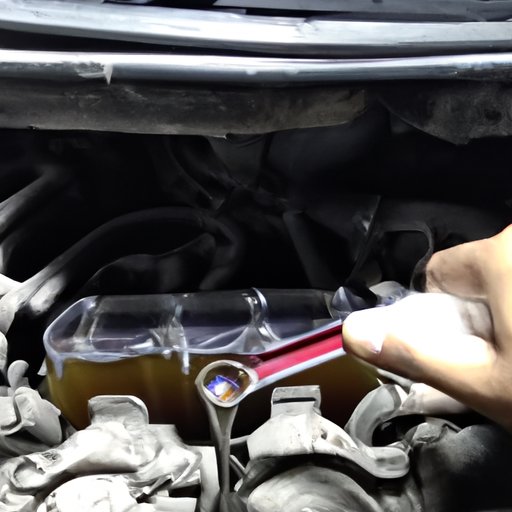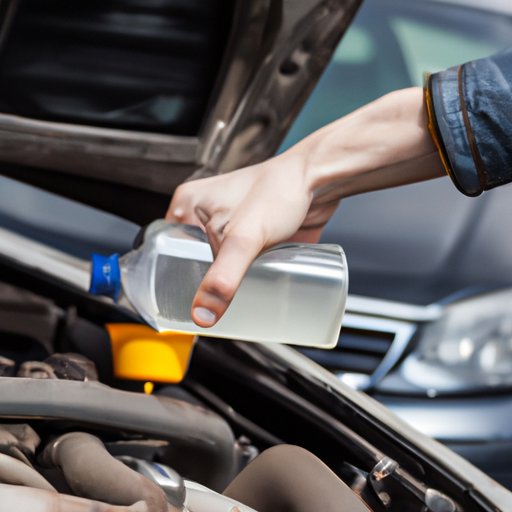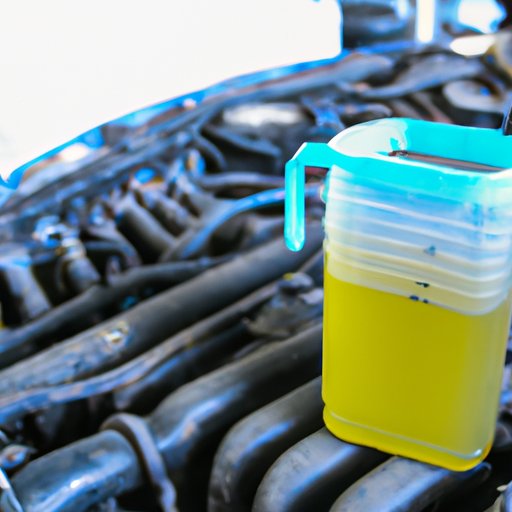Introduction
The importance of regular coolant maintenance in keeping your car running smoothly cannot be overstated. Although it may not be top of mind when it comes to automotive maintenance, coolant plays an integral part in keeping your vehicle’s engine functioning properly. In this article, we’ll explore the interval at which coolant needs to be replaced and what you need to know about coolant maintenance to ensure your vehicle stays healthy.

Exploring the Interval of Coolant Replacement
When it comes to replacing your car’s coolant, one question is paramount: How often should you change your car’s coolant? Generally speaking, coolant should be replaced every two to three years or 30,000 to 50,000 miles, whichever comes first. However, this timeframe can vary depending on several factors, such as the type of coolant used, the age of your vehicle, and your driving habits.
The benefits of regular coolant replacement are manifold. First, new coolant helps keep your engine temperature regulated, preventing it from overheating. Second, new coolant prevents corrosion and rust from forming in the cooling system, which can cause permanent damage if left unchecked. Finally, regularly replacing your coolant ensures that the antifreeze mixture remains balanced, helping to protect against freezing during winter months.
When to Replace Coolant – Timeline Guide
Now that we’ve established the basic principles behind coolant replacement, let’s dive into the specifics of when to replace coolant. As mentioned above, the general rule of thumb is to replace coolant every two to three years or 30,000 to 50,000 miles, but there are a few factors that can affect this timeline.
For starters, the type of coolant used in your vehicle can have a direct effect on the coolant replacement interval. For instance, some coolants are designed to last up to five years or 100,000 miles, whereas other coolants may only last two years or 30,000 miles. Additionally, the age of your vehicle can also play a role in determining the coolant replacement interval. Older vehicles tend to require more frequent coolant replacements due to wear and tear.
Finally, your driving habits can also influence when you need to replace coolant. If you frequently drive in extreme temperatures or take long trips, you may need to replace your coolant more often than the average driver. The best way to determine the right interval for your vehicle is to consult your owner’s manual or speak with a qualified mechanic.
What You Need to Know About Coolant Maintenance
In addition to knowing when to replace your coolant, there are a few other things you need to know about coolant maintenance. The first is to always adhere to the manufacturer’s recommendations regarding coolant replacement. This will ensure that you are using the correct type of coolant for your vehicle and that you are replacing it at the correct intervals.
You should also check the coolant level and color regularly. Low coolant levels can lead to overheating, while discolored coolant may indicate a leak or other issue. If you notice either of these signs, it’s best to have your vehicle checked by a professional as soon as possible.

Avoiding Automotive Problems Through Proper Coolant Replenishment
Properly maintaining your vehicle’s coolant is essential for avoiding automotive problems down the line. Incorrectly maintained coolant can lead to overheating, corrosion, and rust, all of which can cause serious damage to your vehicle. Additionally, failing to replace your coolant at the recommended intervals can result in decreased fuel efficiency and poor engine performance.
Fortunately, there are a few simple steps you can take to avoid these issues. First, make sure you’re following the manufacturer’s recommendations for coolant replacement. Second, check the coolant level and color regularly and have your vehicle serviced if any issues arise. Finally, keep an eye out for any warning signs of a problem, such as strange noises or smells coming from the engine.
Conclusion
Coolant is an important component of your vehicle’s engine, and proper maintenance is essential for ensuring that your car runs smoothly. Generally speaking, you should replace your coolant every two to three years or 30,000 to 50,000 miles. However, this timeline can vary based on the type of coolant used, the age of your vehicle, and your driving habits. To ensure your vehicle’s health, it’s important to adhere to the manufacturer’s recommendations and take preventative measures to avoid potential issues.
By following the tips outlined in this article, you can rest assured that your vehicle’s coolant is being properly maintained and that your car will remain in good condition for years to come.
(Note: Is this article not meeting your expectations? Do you have knowledge or insights to share? Unlock new opportunities and expand your reach by joining our authors team. Click Registration to join us and share your expertise with our readers.)
